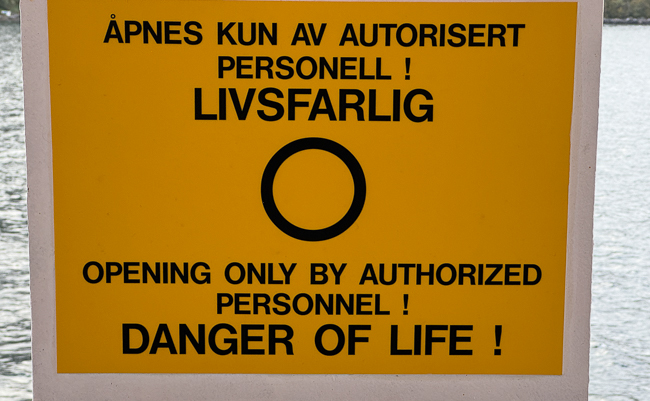September 2024
I boarded the MS Richard, a boat with the Hurtigruten Line, for their Astronomy Voyage along the Western Coast of Norway and into the Arctic Circle, focusing on the Northern Lights.
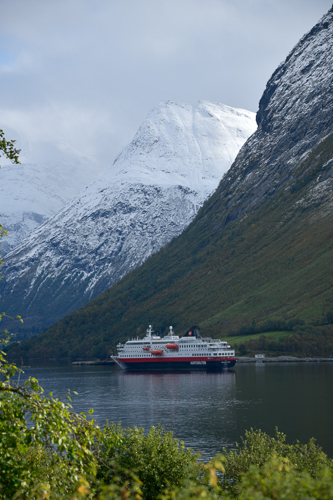
Hurtigruten has a long and fascinating history. It began in 1893 with a steamer owned by Captain Richard With.
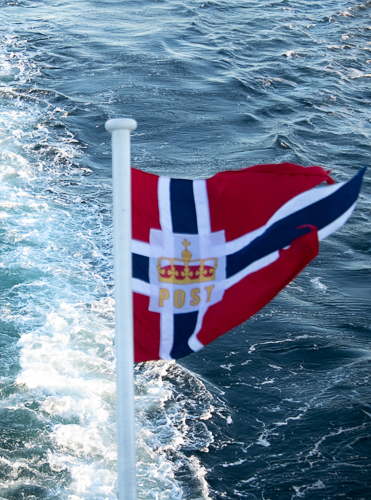
Today, their coastal ships carry freight, mail, and guests along the coast of Norway. People get on and off as we stop, and freight is dropped off and loaded at various ports as well. I am on the boat for 11 days and 12 nights, sightseeing during the day and sky-gazing once the sun goes down.
Day One Stops in Urke and Alesund
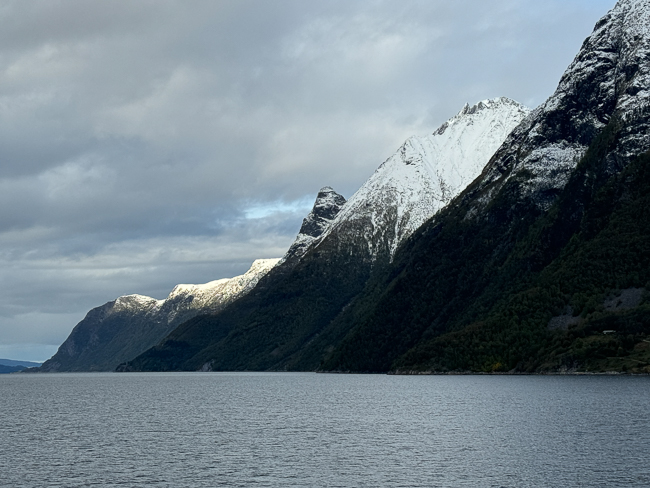
The coast of Norway
Urke is a very tiny village in the Sunnmore Alps with a population of around 30. It is serviced by Hurtigruten, which has a tender to ferry people back and forth.

*
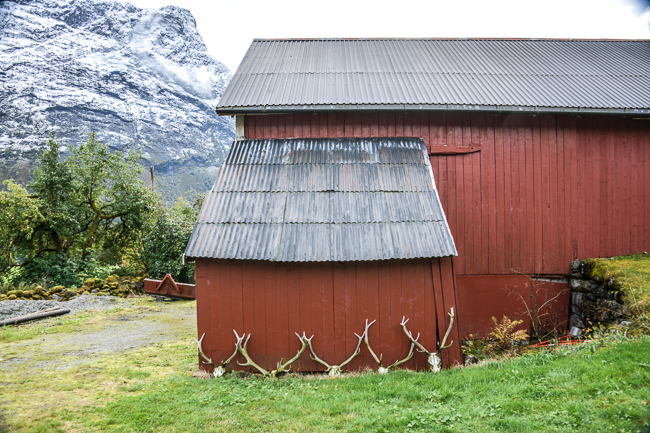
Urke, Norway
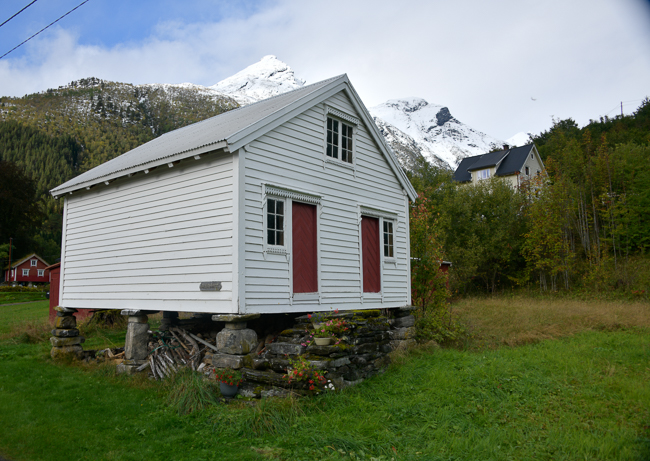
A Storage Shed in Urke, notice the two doors, compared to the one in most sheds I have seen thus far.
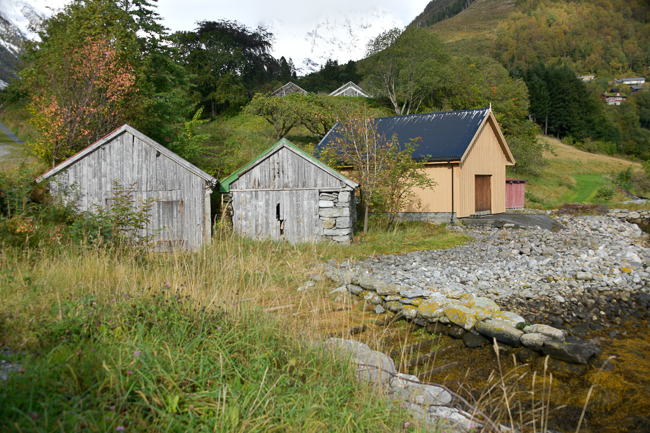
I found these little sheds on the water fascinating. Between the rocks leading to them are round logs. I assume this is a boat storage with an ancient way of getting the boat inside.
Alesund
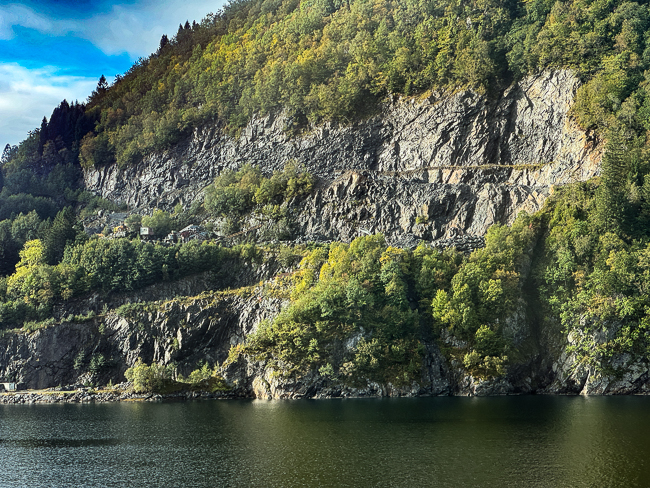
Entering the fjord on the way to Alesund
On the night of January 23rd, 1904, the town was the scene of the Ålesund Fire. It started in the Aalesund Preserving Company factory and was one of the most terrible of the many conflagrations in Norway. Fed with gale-force winds, practically the entire town was destroyed. The fire destroyed nearly 850 houses, leaving approximately 230 houses remaining. Only one person died in the fire, the 76-year-old Ane Heen, but more than 10,000 people were left without shelter.
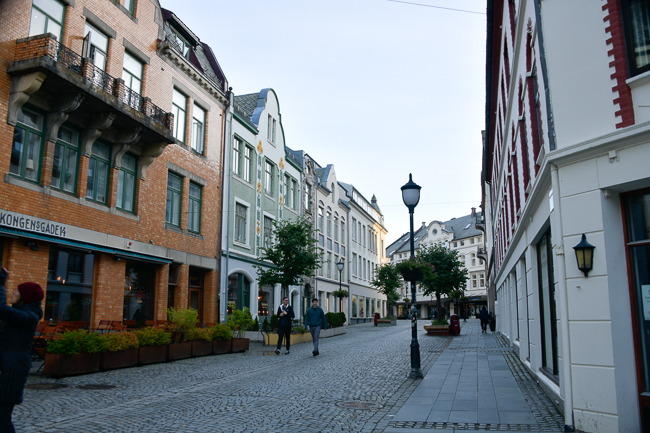
Alesund
German Kaiser Wilhelm of Germany had often vacationed in Sunnmøre, so after the fire, he sent four warships with materials to build temporary shelters and barracks. The town was rebuilt in Jugendstil, the architectural style of the time, in stone, brick, and mortar. The structures were designed by approximately 20 master builders and 30 Norwegian architects.
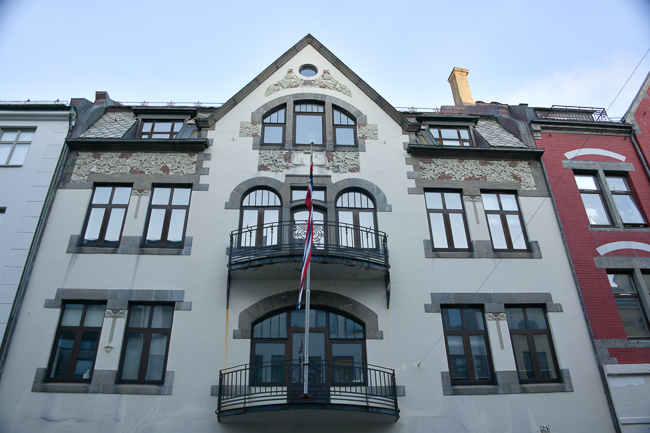
Jugendstil was the German counterpart of Art Nouveau.
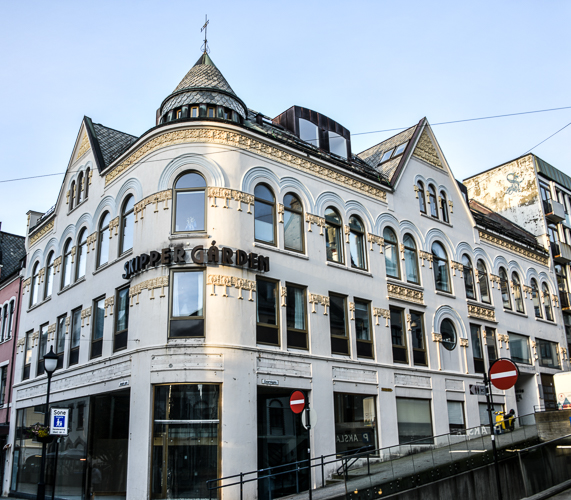
Walking the deck of the boat, I saw this sign on the rail. I felt it belonged more on the Charon crossing the river Styx than this boat—the joy of language translation.
